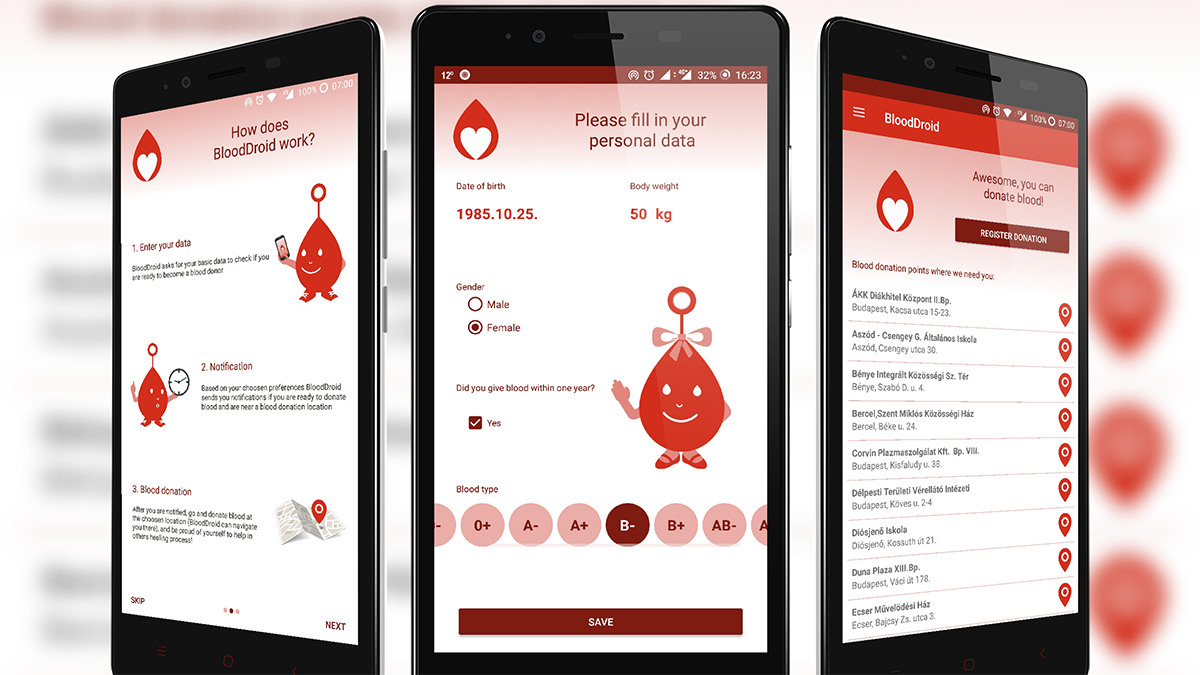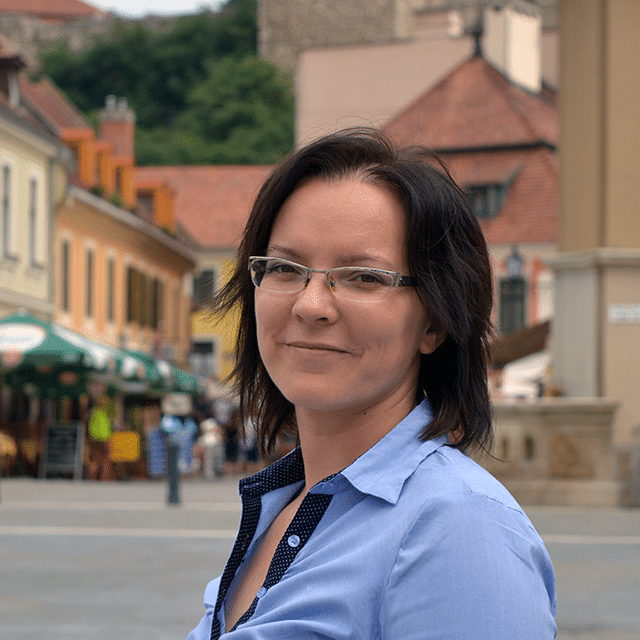Become an Android developer.
Start Learning
Melinda Kostenszki and her team of Google Developer Scholarship recipients used their Udacity learning experience to build the BloodDroid app!

Melinda Kostenszki is a quintessential lifelong learner. Not only that, she has a knack for surrounding herself with other individuals who share similar traits. Lifelong learners are proactive. They don’t just wait for opportunities; they create success for themselves. They may suffer doubts about their own potential just like anyone; but then they push themselves to get the skills they need. Lifelong learners don’t fade away when faced with challenges, they remain the protagonists in their own life stories.
Above all else, they keep learning.
Melinda is part of a team of Hungarian students who earned Android Developer Nanodegree program scholarships through the Google Developer Scholarship initiative. As you’ll see, they are a relentless group of lifelong learners; so much so they didn’t even wait until graduation to put their newfound developer skills to the test. They pushed themselves beyond expectations, and created something spectacular as a result.
This is how they did it.

“We decided to build a new app from scratch, with the idea that it would give us the edge when decisions were made for the scholarship’s second phase. We wanted to do something that helped society, and that would be a technical challenge that would demonstrate the skills we’d built already.”
Melinda’s husband had done some work with the Hungarian National Blood Transfusion Service, and this gave Melinda an idea. She believed there was an opportunity to create an app that helped people find their closest blood donation center, and set reminders so that they actually donated blood. The group loved the idea—it had life-saving potential, and commercial potential as well. Through her husband’s contacts, Melinda was able to pitch the concept directly to the organization. They extended an invitation to present the idea in-person.
“We showed them the basic app concept we had, and the functions we wanted to create. They were really impressed and keen to see a working version. They wanted to cooperate on an actual business basis!”
The team of eight were justifiably excited, and resolved to set themselves strict work deadlines. They needed to finish the app with enough time to publish it on the Nanodegree program forum before scholarship decisions were made, and they wanted to leave a week for other students to download their work and provide feedback—this meant they had just two weeks to create the app!
They set to work, sharing out different parts of the work between the group members. They plotted the features they wanted the app to have—from simplifying the process of registering as a blood donor, to creating an engaging user experience, complete with blood droplet characters. They even came up with a name—BloodDroid.
Nearly all of the team had full-time jobs, and they had to spend many long evenings video-conferencing. These experiences strengthened their bond, and their resolve.
“There were a lot of late nights, but the best jokes were always made at midnight. Everyone was very tired, but we became real friends during those late-night sessions. Everyone wanted to make it and was so excited to be working on something real.”
The team made their deadline, and posted their project to the program’s forum. Positive responses from the student community flooded in almost immediately.
“It felt really great to receive so much positive feedback about the app. We got so much attention, so much praise, that we really felt like superheroes! It was so good to know that all the hard work had been worthwhile!”
Even better news was still to come. Shortly after finishing the app, every single member of the BloodDroid team learned they had landed full scholarships for the Nanodegree program. Plus, when the Blood Transfusion Service saw the app, they were very positive. They requested additional features, and Melinda and her team are now working on final specifications for a fully-featured app. Their project looks set to become a commercial reality!
“When we finished the app, and then when I got through to the full Nanodegree program, it was really the moment when I started to think: ‘Android programming isn’t just a hobby for me now. Maybe it’s something far bigger!’ I now see myself as a developer who can go out and build things.”
Congratulations to Melinda and the whole BloodDroid team! The initiative and creativity you have shown has amazed us all, and you’ve given the world something that can help save lives. This is an incredible use of your new skills.
The full BloodDroid team is: Mónika Csontos, Miklós Mayer, Dániel Vokó, Viktória Schmideg, Bence Kónya, Karolin Fornet, Petra Lehoczky, and Melinda Kostenszki.







